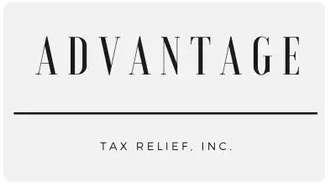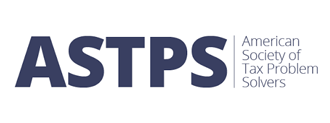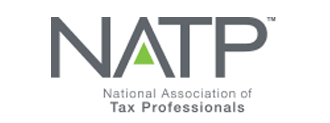Avoid Tax Troubles
July 2, 2023
July 2, 2023
How Amended Tax Returns Can Save Your Day
Filing your tax return accurately is crucial to avoid unnecessary tax troubles. However, it's not uncommon to discover errors or overlooked information after you've already filed. Fortunately, the Internal Revenue Service (IRS) allows taxpayers to amend their returns using Form 1040X.
In this blog post, we'll explore how amended tax returns work, the importance of seeking professional assistance, and how our firm can help you navigate the complex world of tax resolution.
Uncovering Missed Income and Deductions
:
Sometimes, taxpayers file their returns only to realize later that they omitted certain sources of income, such as earnings from temporary jobs or side gigs. This oversight becomes apparent when they receive a 1099 or a late W2 form indicating the income earned. Similarly, others may discover they were entitled to additional deductions or exemptions. For such cases, amending your tax return is the appropriate course of action.
Understanding the Timeframe
:
The IRS allows individual income tax returns to be amended up to three years after the original return's due date. Form 1040X is the official document used for amending returns. While you can file an amended return on your own, it's strongly recommended to consult a tax resolution professional. They possess the expertise to handle multiple years of unfiled tax returns, potentially negotiate reduced payments, and save you from unnecessary headaches.
The Amended Tax Return Process
:
Not all errors require filing an amended return. The IRS automatically corrects simple math mistakes. However, when there's a need to change filing status, income, allowable deductions, or credits, filing an amended return is essential. To initiate this process, you'll need to complete Form 1040X, which cannot be electronically filed. This is where the expertise of a tax professional becomes invaluable, as they can guide you through the intricacies of the form.
Proper Documentation and Explanation
:
When completing Form 1040X, each amended tax year requires its own separate form, each of which must be mailed in its own envelope. The form provides space to explain the changes made, and it's important to clearly state the line numbers and reasons for the amendments. While you don't need to attach a copy of the original return, any additional IRS forms or supporting documents must be included to substantiate the changes.
Processing Time and State Returns
:
After mailing your amended return, it may take several weeks for the IRS to process it. It's worth noting that amending your federal return may also necessitate changes to your state tax return, especially if the amendment involves reporting increased income. Consulting a tax resolution professional will ensure that all necessary steps are taken to address both federal and state tax matters.
Seeking Expert Assistance for Tax Debt Cases
:
If you anticipate owing money to the IRS after filing your return, it's crucial to engage the services of experienced tax resolution firms like ours. Our tax resolution specialists possess specialized skills that go beyond what traditional accounting or tax law firms can offer. Our firm specializes in tax problem resolution and boasts a team of CPAs, EAs, and attorneys who can represent you before the IRS. Contact us today for a no-obligation confidential consultation, and let us help you explore permanent solutions to your tax problems.
In conclusion, amending your tax return can rectify errors, report missed income, or claim additional deductions. The process involves completing Form 1040X and mailing it to the IRS. While it may take time for the IRS to process your amended return, seeking professional assistance from a tax resolution expert ensures that the procedure is handled accurately and efficiently. Don't let tax troubles overwhelm you— reach out to our firm today
and take the first step towards resolving your tax issues for good.


October 1, 2025
It seems like natural disasters such as hurricanes, floods, earthquakes, wild fires, and tornados are happening all the time and just about everywhere. Climate change also seems to be making these disasters more deadly and more destructive. Many people do step up to help survivors with needed financial donations. The only thing worse than the disasters themselves are the scammers that exploit these situations for financial gain at the expense of hard working and well-i ntentioned survivors and donors. Like yourself! Scams can take the form of fake charities and impostors posing as legitimate organizations or government agencies. Common scams typically entail vague appeals for donations without details, fake websites with names like real charities and caller ID tricks to appear legitimate. Several warnings signs of these scammers are: 1) pressure to give immediately, often preying on your emotions and not logic 2) a thank-you for a previous donation you don’t recall making 3) a request for payment by cash, gift card or wire transfer. The last are scammers’ favored payment methods because the money is easy to access, difficult to trace and almost impossible to cancel. A legitimate charity will welcome your donation whenever you choose to make it and by whatever means you choose. A great way to verify their legitimacy is to use the IRS Tax Exempt Organization Search tool at https://apps.irs.gov/app/eos/. Additionally, clients should always ask for a receipt and then check their bank or credit card statements to ensure the donation amount is accurate. If you think you were a victim of a suspected scam, you can and should report them to the Federal Trade Commission at https://reportfraud.ftc.gov/. How Advantage Tax Relief Can Assist You At Advantage Tax Relief, based in Itasca, IL, we have over a decade of experience helping individuals and businesses resolve tax issues. Our team specializes in offering personalized tax relief and tax resolution solutions tailored to your unique needs. We will work with you to assess your situation and explore your options, whether it’s an Offer in Compromise, installment agreements, or other strategies. Our experience allows us to identify the best path forward to ease your tax burden and guide you toward financial freedom. If you're facing tax debt, don't wait. Advantage Tax Relief is here to assist you with effective, professional help. Call Advantage Tax Relief today at 630-773-3200 to schedule a consultation and take the first step toward resolving your tax issues.

August 29, 2025
First, working overtime does not mean you are getting an automatic increase in your take-home pay because it is not going to be taxed. That is not what is going to happen. The tax savings will be in the form of a tax deduction when you file your Federal tax return the following year. There will be no immediate impact. Second, it only applies for Federal income taxes. It does not include State, Social Security or Medicare taxes. Third, it also only applies to the overtime premium and within certain deduction and wage limits. You can only deduct the pay that exceeds your regular rate of pay. The 'half' portion of 'time-and-a-half' compensation. For example, say you make $20 per hour and work 5 hours of overtime that week at time-and-a-half. The deduction would the Federal tax on $50 of premium pay. ($20 divided by 2 times 5 hours) Finally, the maximum annual deduction is $12,500 for single filers and $25,000 for joint filers. The deduction phases out for taxpayers with modified adjusted gross income over $150,000 (or $300,000 for joint filers).



